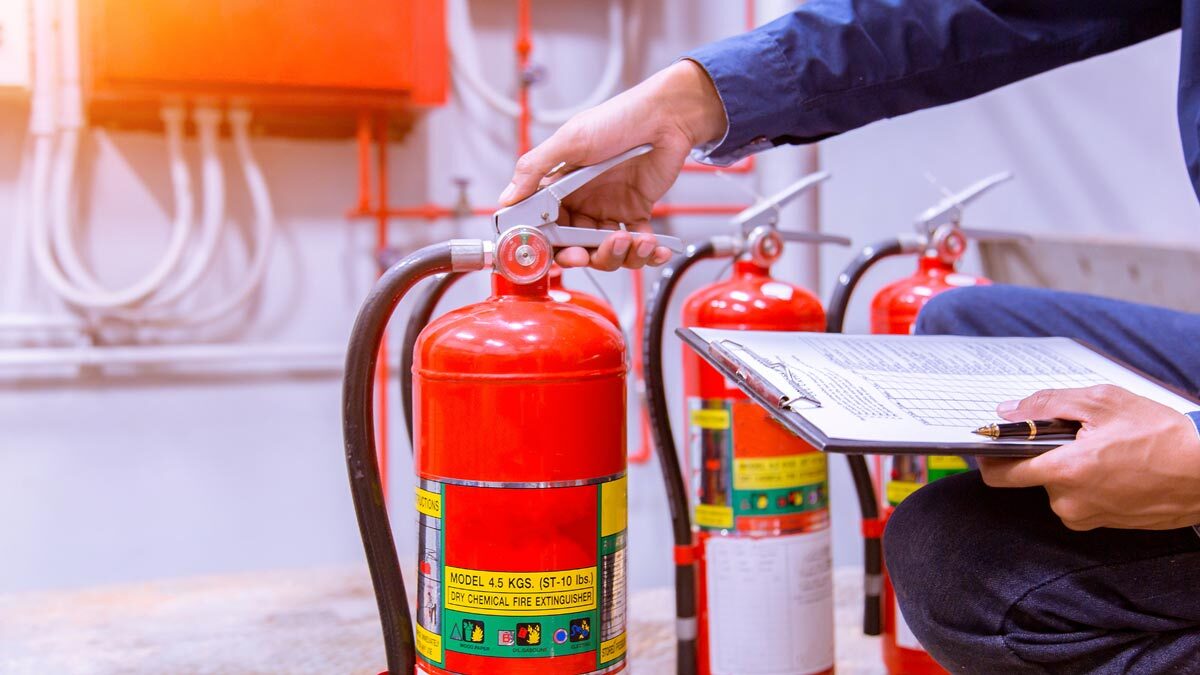Ensuring the safety of your premises is paramount, and a Fire Audit plays a critical role in this process. A Fire Safety Audit involves a systematic evaluation of fire hazards and the effectiveness of fire safety measures in place. The Safety Master, with its extensive expertise, provides a detailed guide on how to conduct a thorough and effective fire audit.
1. Understanding the Importance of a Fire Audit
A Fire Audit is more than just a regulatory requirement; it is a crucial step in protecting lives and property. By identifying potential fire hazards and assessing the readiness of fire safety measures, businesses can significantly reduce the risk of fire incidents. The Safety Master emphasizes that a Fire Safety Audit ensures compliance with safety standards and enhances overall safety preparedness.
2. Preparing for a Fire Safety Audit
Preparation is key to a successful Fire Safety Audit. Begin by gathering all necessary documents, such as fire safety plans, maintenance records, and training logs. The Safety Master advises having a dedicated team to coordinate the audit process, ensuring all aspects of fire safety are thoroughly reviewed.
3. Conducting a Thorough Site Inspection
A comprehensive Fire Audit requires a detailed site inspection. This involves checking fire exits, emergency lighting, fire alarms, and suppression systems. The Safety Master recommends using a checklist to ensure no aspect is overlooked. During the Fire Safety Audit, inspect all areas, including storage rooms, electrical panels, and high-risk zones.
4. Identifying Fire Hazards
One of the primary objectives of a Fire Safety Audit is to identify potential fire hazards. Look for combustible materials, faulty wiring, and blocked exits. The Safety Master suggests categorizing hazards based on their severity to prioritize mitigation efforts.
5. Assessing Fire Safety Equipment
Evaluate the condition and accessibility of fire safety equipment during the Fire Audit. Check the functionality of fire extinguishers, smoke detectors, and sprinkler systems. The Safety Master emphasizes that regular maintenance and testing of these devices are essential for effective fire response.
6. Reviewing Fire Safety Policies and Procedures
A Fire Safety Audit should include a review of existing fire safety policies and procedures. Ensure that evacuation plans are up-to-date and that staff are familiar with emergency protocols. The Safety Master advises conducting regular fire drills to test the effectiveness of these plans.
7. Training and Awareness Programs
Employee training is a crucial component of a Fire Safety Audit. The Safety Master recommends implementing comprehensive training programs that cover fire prevention, emergency response, and the use of fire safety equipment. Regular training sessions help ensure that all employees are prepared to act quickly in the event of a fire.
8. Documenting the Findings
Thorough documentation is essential for a successful Fire Audit. Record all findings, including identified hazards, equipment assessments, and policy reviews. The Safety Master advises creating a detailed report that outlines recommended corrective actions and timelines for implementation.
9. Implementing Corrective Actions
After completing the Fire Safety Audit, it is crucial to address identified issues promptly. The Safety Master stresses the importance of implementing corrective actions to mitigate risks. This may involve repairing faulty equipment, updating fire safety plans, or enhancing employee training programs.
10. Regular Monitoring and Reevaluation
Fire safety is an ongoing process, and regular monitoring is essential. The Safety Master recommends scheduling periodic Fire Safety Audits to ensure continuous compliance and safety. Reevaluation helps identify new hazards and assess the effectiveness of implemented measures.
Conclusion
Conducting a Fire Audit is a vital step in ensuring the safety and security of your premises. By following these ten essential steps, as outlined by The Safety Master, you can conduct a comprehensive Fire Safety Audit that not only meets regulatory requirements but also enhances overall safety preparedness. Remember, the goal is to create a safe environment for everyone, and a thorough Fire Audit is a significant step toward achieving that goal.

